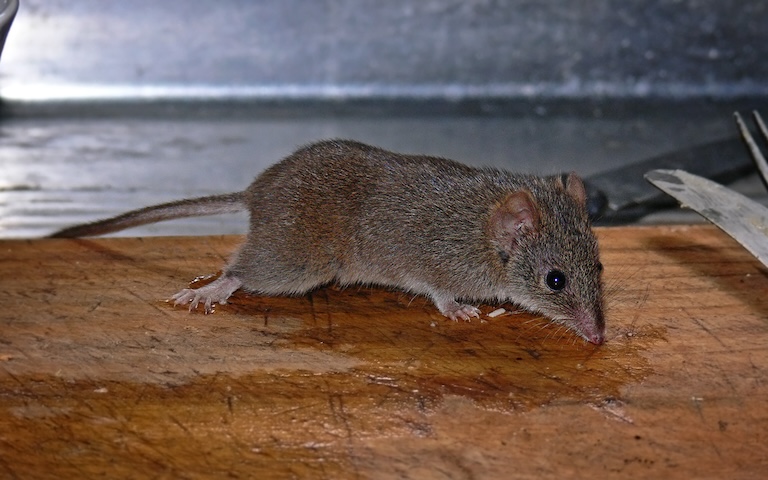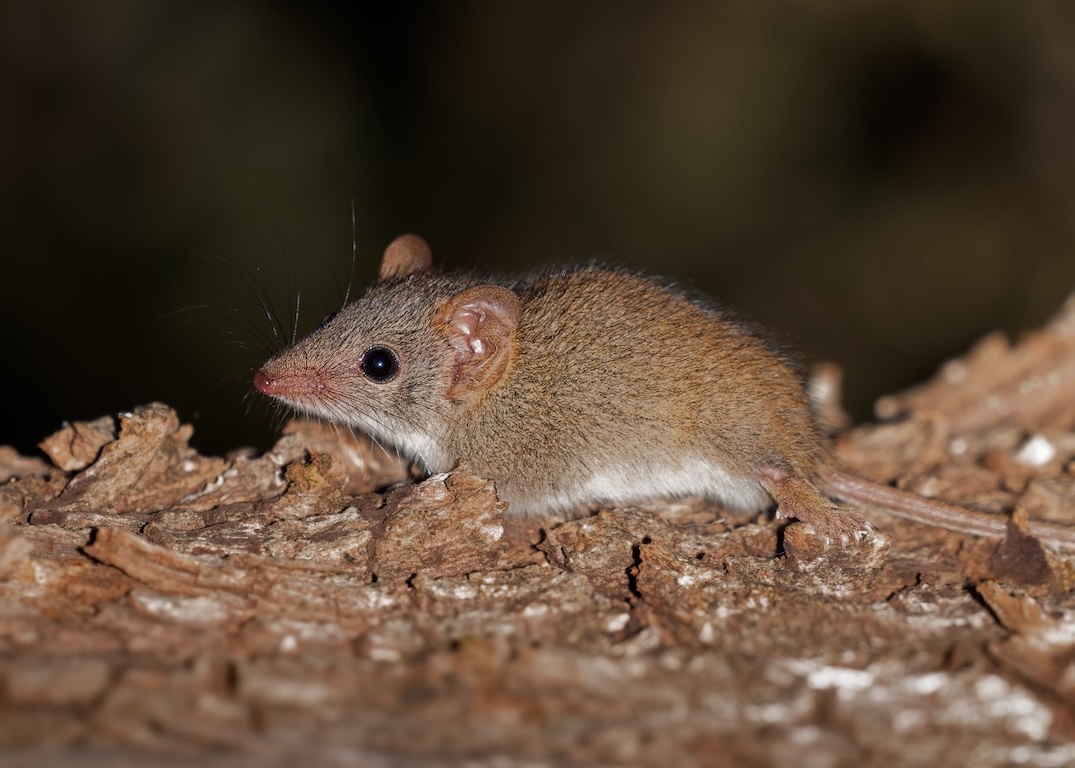Xanthippe’s Shrew Profile
Around the foothills of the Usambara mountains, there’s a mammal that was touched on briefly and then mostly ignored. This animal, named after the wife of one of the world’s most respected philosophers, risks the same fate as her: labelled briefly, dismissed, and then never heard of again.
This is the story of a little shrew that symbolises many of the remaining secrets of the ancient Insectivora order, and a bit about our blind spots in society: Xanthippe’s shrew.

Xanthippe’s Shrew Facts Overview
| Habitat: | Dry savanna, subtropical or tropical shrubland |
| Location: | Foothills of the Usambara Mountains, Kenya and Tanzania |
| Lifespan: | Unknown |
| Size: | 10 cm with a 6 cm tail |
| Weight: | 13 g (0.5 oz) |
| Colour: | Grey |
| Diet: | Mostly invertebrates, some plant matter |
| Predators: | Birds, snakes, and larger mammals |
| Top Speed: | Not recorded |
| No. of Species: | 1 |
| Conservation Status: | Least Concern |
Xanthippe’s shrew is a glowing temptation for any prospecting researcher into the smaller mammal clades. As a shrew, it is an ancient and fascinating animal, likely with adaptations unseen in almost any other group.
Yet, it’s documented from a single piece of literature from 1910, and almost everything about it needs to be inferred from this, as well as its curious name, linked to the equally mysterious wife of Socrates.
Interesting Xanthippe’s Shrew Facts
1. Eulipotyphla
“Chyme” is a rather pretty name for a pretty disgusting fluid, and (all being well) one that is squirted periodically into your colon, by way of a small part of the large intestine called the caecum.
This name is short for the Latin, “intestinum caecum”, which translates to “blind intestine”, as it appears to be a dead end. As with many things in Latin, it’s stolen from the Greek typhlòn, which means the same thing.
But what does this have to do with shrews? Well, there was once a mammalian order known as the Insectivora. This was basically the mini Carnivora, and contained lots of little predators like hedgehogs, moles, shrews, and basically things that weren’t specialised like rodents, cats, dogs or mustelids, either.
This group was identified as a taxonomic order to begin with, but it was quickly apparent that they weren’t genetically all linked, so it was sort of excused as an evolutionary grade, or a sort of general ranking based on their ecological positions and their degree of specialism.
As taxonomy progressed, tree shrews and the African elephant shrews, and the Asian colugos and tree shrews were removed from this group, and the remainder were renamed Lipotyphla. This order was grouped based on a lack of that blind gut we just mentioned.
Unfortunately for taxonomists, advancements in genetics debunked this group as monophyletic, too, and the next wave of redundancies saw moles, tenrecs, and otter shrews sent off with six months’ wages and a positive reference.
The survivors were named Eulipotyphla, the entire group of the unspecialised insectivores that dint’ have a blind gut.
Within this order of cuties, there are now four families: the unique and venomous solenodons, the moles, the hedgehogs, and the shrews (the real shrews, not the elephant shrews, treeshrews, otter shrews, West Indies shrews, or marsupial shrews, which are each in their own order). 1
2. They’re not mice
So, despite being very rodent-like, these indescribably soft little mammals aren’t closely related to mice at all. In fact, hedgehogs are far closer to them, genetically. This is also evidenced in the sharp little spines they have for teeth, rather than the ordered pairs found in the mouth of a rodent.
They also have a lot more teeth than rodents, and looking at the skull of a shrew, you can really feel the wave of relief that the whole shrew is less than 10 cm long. Not all of them, though – the largest is 15 cm long and 100g in weight. So, the size of a small rat.
But again, shrews are not rodents, yet they are in many ways even more remarkable. Some shrews are venomous. Some use echolocation. Shrews are the fourth-most diverse mammalian family, with almost 400 species in nine genera. One of these genera is Crocidura, and this is the most populated genus of any mammal with 180 species!
So, it’s statistically most likely that this genus is where Xanthippe’s shrew is found. And yet, this relatively poorly understood group is summed up in the sheer lack of data on this animal in particular. 2 3. It’s a mystery!
This species has a conspicuous lack of data, with its Wikipedia page amounting to 36 words, four of which are “Citation needed”.
The primary literature isn’t much better, either, and this is a fantastic example of why research in animal sciences is still a significant frontier of research, even in mammals.
Xanthippe’s shrew was described in 1910 by Wilfred Hudson Osgood. And that’s about it, as far as research into this species is concerned!
Of the 53 shrews collected in the research that led to its description, Xanthippe’s shrew was only around 3%, suggesting that even in its own range, this is a rare animal.
The name comes from the wife of Socrates, who was described by one of Socrates’ pupils as “the most difficult, harshest, painful, ill-tempered” woman (given the level to which resilience was a characteristic attributed to Socrates, it may have been only he who could stand her).
There’s an old slur for such a woman applicable here, as “shrews” were once commonly defined as women who fall somewhere on the spectrum of annoying to intolerable. This might be a clue to our little insectivore friend’s temperament, though there’s nothing of such to be found in the literature.
Osgood did suggest that it might be closely related to Crocidura hirta, whose range appears to be substantially larger and overlaps, yet is almost as mysterious in the scientific literature. 3

4. Tough little shrew
C. hirta, commonly known as the Lesser red musk shrew, and Osgood’s proposed closest relative of Xanthippe, is said to be a well-adjusted species that lives very well among human development. They’re said to eat mostly insects, as their traditional clade dictates, but will also feed on some plant matter.
It has the widest range of any shrew in Africa, at least, found in Central, East and southern Africa, and across a range of habitat types, including the range in which Xanthippe’s shrew was found.
The obvious question arises, then: Is Xanthippe’s shrew simply a subspecies or a subpopulation of C. hirta? 4
5. Yellow horse
There is one final clue that might be worth considering, and that is the origin of the word Xanthippe itself. It’s got Greek roots, translating to Yellow Horse, and there’s a small likelihood that Osgood was referring to this descriptor in his naming scheme, though considering the parallels between shrews and women, this seems like the weaker link.
One thing’s for sure, though, there is a strong parallel to be drawn between what we know of Xanthippe the woman and Xanthippe the shrew: almost nothing but the brief description by an unrelated man.
Socrates himself lauded the argumentative nature of his wife as a reason why he liked her. Perhaps Xanthippe was merely a woman with an opinion in a world where that wasn’t politically correct, and perhaps this mystery, neglected shrew will one day prove to be venomous, echolocate, or fly, and we simply haven’t reached the level of knowledge to come to this reality yet.
Regardless, Xanthippe’s shrew represents a blind spot in science that’s often filled with the animals we find uninteresting or intolerable, yet, on closer inspection, turn out to be deeply fascinating and can teach us a lot about ourselves. 5
Xanthippe’s Shrew Fact-File Summary
Scientific Classification
| Kingdom: | Animalia |
| Phylum: | Chordata |
| Class: | Mammalia |
| Order: | Eulipotyphla |
| Family: | Soricidae |
| Genus: | Crocidura |
| Species Name: | Xantippe |
Fact Sources & References
- “Taxonomy Browser”, NCBI.
- “Crocidura xantippe Osgood, 1910”, Catalogue of Life.
- (2016), “Crocidura hirta”, IUCN RED LIST.
- Taylor et al (2016), “Crocidura hirta”, Red List of South African Species.
- Shawn Buckles (2024), “What did Socrates say about his wife?”, Wisdom Short.
